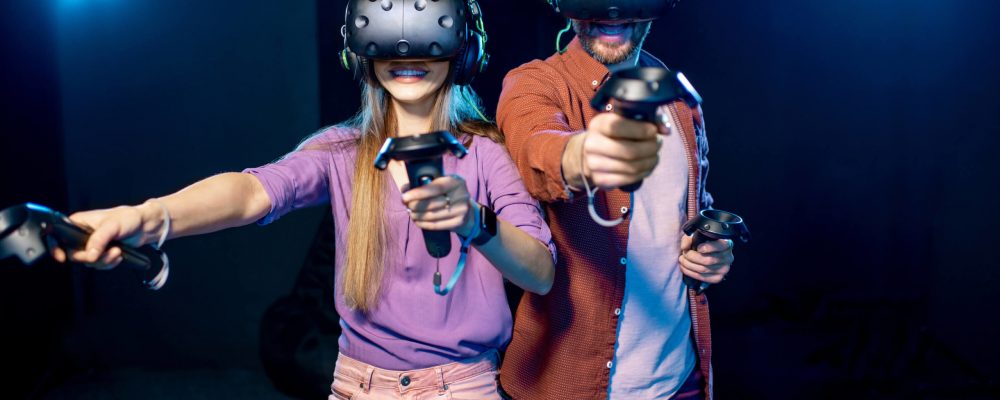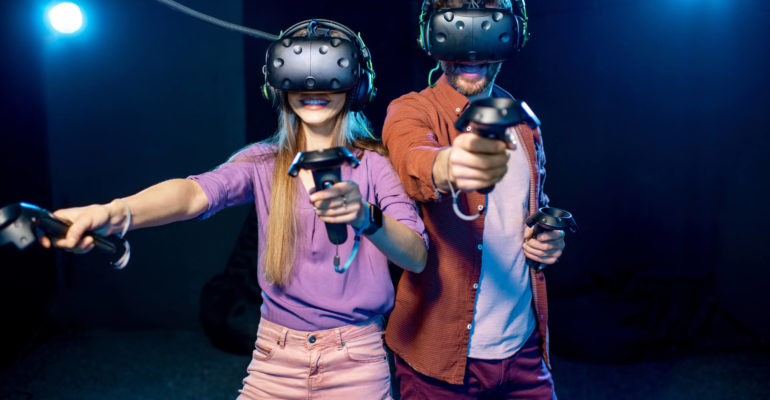
Testing VR Apps & Games

Testing VR Apps & Games
How to Test VR Apps and Games?
Virtual Reality was like a fantasy like Albert Ludwig’s” Magic Spectacles “until technology discovered the current dominant VR headsets and 360 cameras. With Palmer Luckey’s first prototype VR headset Oculus Rift, which kick-started the revolution leading to shaping up the mainstream virtual reality perceptions into reality. Technology is spurring with innovations that are beyond imaginations.
With the onset of virtual reality, many competitors came live like the HTC Vive, Samsung Gear VR, Google Cardboard, Google’s Daydream, and Sony’s PlayStation VR etc. If you go for a complete VR kit then you may find a headset with a thick pair of goggles, whereas some need to connect to the PCs to run the apps and games, whereas a few headsets have the provision to affix the mobile phones to the front and watch. There are other peripheral devices like the hand controllers, treadmills etc that enhance the overall simulated experience in the immersive apps and games.
All these VR apps and games can be downloaded from the Oculus Store, Steam or Playstore as well as some can be accessed standalone with these devices itself.
So how do we go about testing VR apps and games on these devices?
Testing is never the same for VR apps and games. Companies need to ensure that the products they deliver are complete and excellent.
Technology is spurring with innovations that are beyond imaginations. Gone are the days where technology merely remained in screens, now it takes you to experience the reality through these VR apps and games that are popularizing in the market. The immersive technologies are grabbing attention widely.
Uninterrupted VR solutions can be assured to clients. To do so, vigorous testing must be conducted, exploring all the failing tests and revising the same. To test VR apps and games on devices product unlike other software, it is important to lay down the detailed use cases, then determine the device functionality and test the same. Minute bugs cannot be even missed as it hampers the complete fun of these immersive technologies.
Compatibility Testing
To experience Virtual Reality, it is important to test the VR apps or games on different HMDs and its compatibility with the visuals shown. To enjoy a powerful VR immersive experience, then device testing needs to be done. Now the market is flooded with VR headsets like the Samsung GearVR, Google Daydream, Oculus Rift, HTC Vive and Google Cardboard etc. which are both high end and low -end devices for Virtual Reality experience. There are even headsets that can be connected to the computer to watch the immersive videos seamlessly. As these devices blend our reality with the landscape and give a real-time experience, it is imperative to test each detail. From the sensors to the immersion of videos into the real-time data.
Accessibility testing
In Virtual Reality, users experience a real like surrounding through devices that cater to the VR smoothly. As the Virtual Reality is a game of immersive technology, it has a huge impact on vision and your physical being. Hence testers need to ensure that exposure to virtual reality doesn’t cause much health issues like a headache, motion sickness, eye-straining etc. Even though VR means full immersion technology, if the user has discomfort then, limiting it would be ideal. A tester must ensure no worst scenarios are omitted and tested completely. All these VR devices which are used for the games and apps track the body movement with sensors or with inbuilt sensors in the VR devices mounted. With Real-time eye controller, hand and leg movements, it is important to test the various aspects in terms of safety and health.
Peripheral Testing
As VR is completely dependent on the devices that are used to control the simulations, it is vital to test the comfort and the flow of these devices along with the apps and games. In the case of joystick-like hand controllers, are used to control the actions. Sometimes depending on the VR games, they become hands, guns, weapons or any other objects. Hence while mimicking the real-life gestures to the gaming controls, need to be verified. Manus Gloves is again another type of controllers that need to identify hand gestures to interact in the virtual environment. Testing the sensors like the HTC Vive Sensor that detects motion to identify the movement inside the small space for gun shooting games, using the PSVR Aim controller, testing must be conducted on the usage and the accurate viewing and aiming. The famous treadmills like the Virtuix Omni, Cyberith Virtualizer & Katwalk lets the user walk, run, dodge etc… actions along and experience the immersive technology for real. Getting the pace of walking, stumbling etc. need to be tested in such cases.
If you look at the latest technologies that virtual reality is developing into, shaping up a simulated world on its own. There are endless devices coming up with features that transports you into the virtual world. The upcoming trends like the Haptx, which is a suit like sensory that senses the skin, thermal sensations etc. that are going to sweep your feet into the unreal world. Finally, the platform integration, device compatibility, hardware and software complexities etc. need to be tested to ensure that VR apps and games function smoothly. Even the capturing of human gestures and to inanimate the spaces and objects testing need to be done to deliver high-quality VR experience Testing this ubiquity world that is designed is an immense experience.
Variety of immersive products are in line with the companies who are exploring a lot about VR.
With innovation comes plenty of QA works.